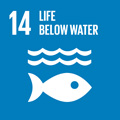- Docente: Pietro Cacialli
- Credits: 6
- SSD: BIO/06
- Language: Italian
- Teaching Mode: Traditional lectures
- Campus: Bologna
- Corso: First cycle degree programme (L) in Natural Sciences (cod. 5823)
-
from Sep 26, 2023 to Dec 19, 2023
Learning outcomes
This course provides students with the basic knowledge in vertebrate anatomy and biology from both functional and evolutionary points of view. Students also gain knowledge about fundamental steps in vertebrate development from fertilization to organogenesis. The students will be able to describe the vertebrate structures and relate morphology, funcion and evolution.
Course contents
Introduction - Comparative Anatomy as a discipline. The comparative method. Adaptation. Convergence. Analogy. Homology. Origin and characteristics of Chordates. Urochordates. Cephalochordates. Craniate. Vertebrates. Classification of Vertebrates. Evolutionary history of Vertebrates and description of the main characteristics of each class. Fundamental stages in the evolution of Vertebrates. Vertebrate embryology. Gametes and fertilization. Segmentation, gastrulation, neurulation. The embryonic appendages. Reproductive system. Mode of reproduction in Vertebrates. Development and sexual differentiation of the gonads. The sewer. The organization of testes and ovaries. Spermatogenesis and oogenesis. The ovarian cycle. Integument. Embryonic origin. The integument and its appendages (scales, scales, feathers, hair and horns). Coloration of the integument. Nervous system. Function and evolution of cells and nervous circuits. Early stages of development of the nervous system. Spinal cord and spinal nerves. Evolutionary theories of the brain. Fundamental subdivisions of the brain (forebrain, midbrain, hindbrain). Cerebellum: functional adaptations. The optical roof and the evolution of the visual pathways. Embryonic formation and evolution of the telencephalon. Organization of the peripheral nervous system. Sensory systems with major emphasis on: organs of touch, thermo receptors, lateral line organs, olfactory organs. Digestive system. Embryonic origins. Structure, subdivisions and specializations of the digestive tract. Digestive glands. Structure, classification and specialization of teeth. Excretory system. Excretion of nitrogenous compounds and osmoregulation in vertebrates. Composition of the urinary system. Morphofunctional aspects and evolution of the nephron. Development of the kidney (pronephros, mesonephros, metanephros) and urogenital ducts in anamni and amniotes. Circulatory system. Simple and double circulation, incomplete and complete. Hematopoiesis: blood; morphology of lymphoid and myeloid organs in different classes of vertebrates. Morphogenesis, structural and evolutionary aspects of the heart and aortic arches. Skeletal system. The post-cranial axial skeleton, development and evolution of the vertebrae. The appendicular skeleton: pectoral and pelvic girdles, paired fins and limbs. Limb evolution: fin-tetrapod limb transition. Main subdivisions of the skull (neurocranium, splanchnocranium, dermatocranium). Evolution of the spalnchnocranium: origin of the jaws in fish and of the middle ear ossicles in mammals. Respiratory System. General characteristics and embryonic development of the organs of respiration. Branches, lungs and swim bladder in fish. The skin as a respiratory organ. Evolution and specializations of the lung in Tetrapods.
Readings/Bibliography
- Stingo V. Edi-Ermes, Milano 2016. Anatomia Comparata.
- KF Liem, WE Bemis, WF Walker e L Grande, Anatomia Comparata dei Vertebrati. Una visione funzionale ed evolutiva, EdiSES, Napoli, 2011
- Biologia dello sviluppo, Scott F. Gilbert, 3°Ed. italiana Zanichelli
Teaching methods
The course is organized in frontal lessons relating to the topics indicated in the program.
Assessment methods
The exam includes an oral test (in italian language) to ascertain the level of knowledge and understanding achieved by the student regarding the topics covered during the course. The oral test is also aimed at verifying the student's synthesis ability and language skills.
Teaching tools
Projector for Powerpoint presentations of lessons. And macroscopic preparations will be used to delve deeper into the topics covered.
Office hours
See the website of Pietro Cacialli
SDGs




This teaching activity contributes to the achievement of the Sustainable Development Goals of the UN 2030 Agenda.
